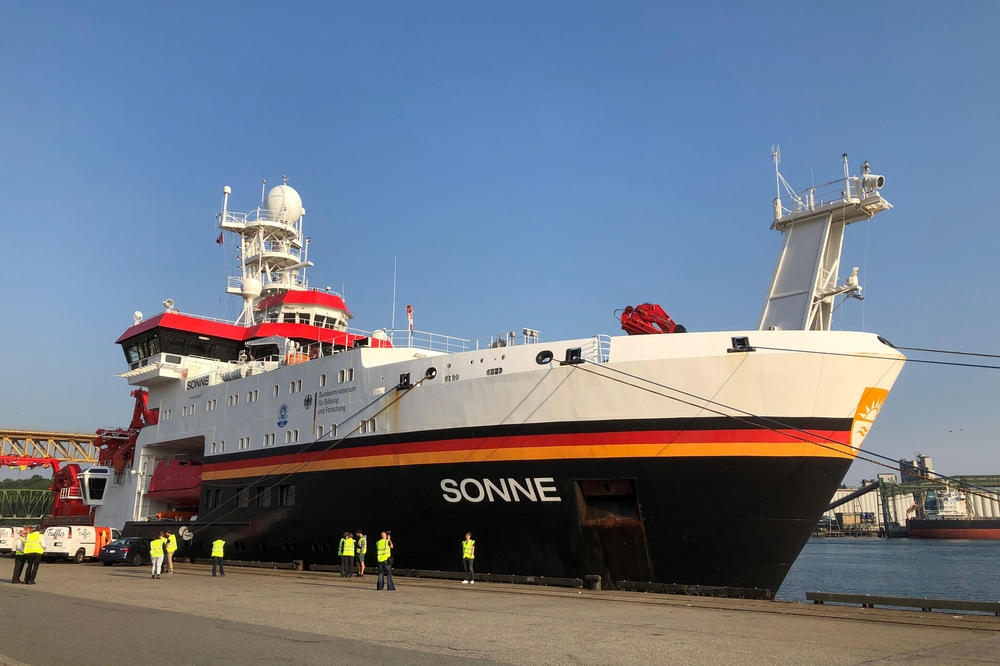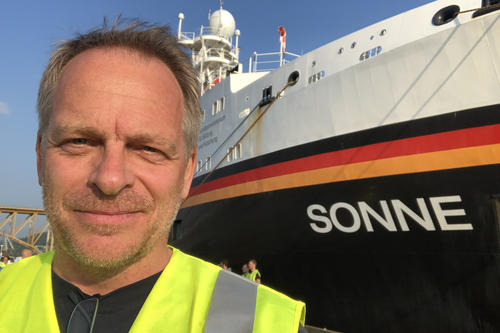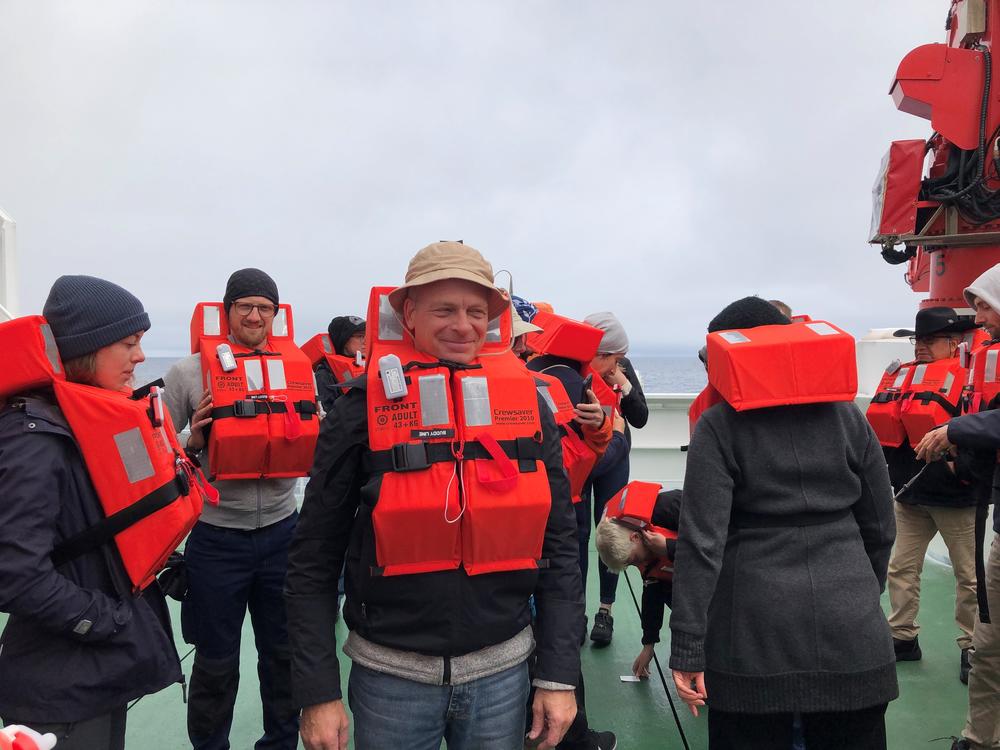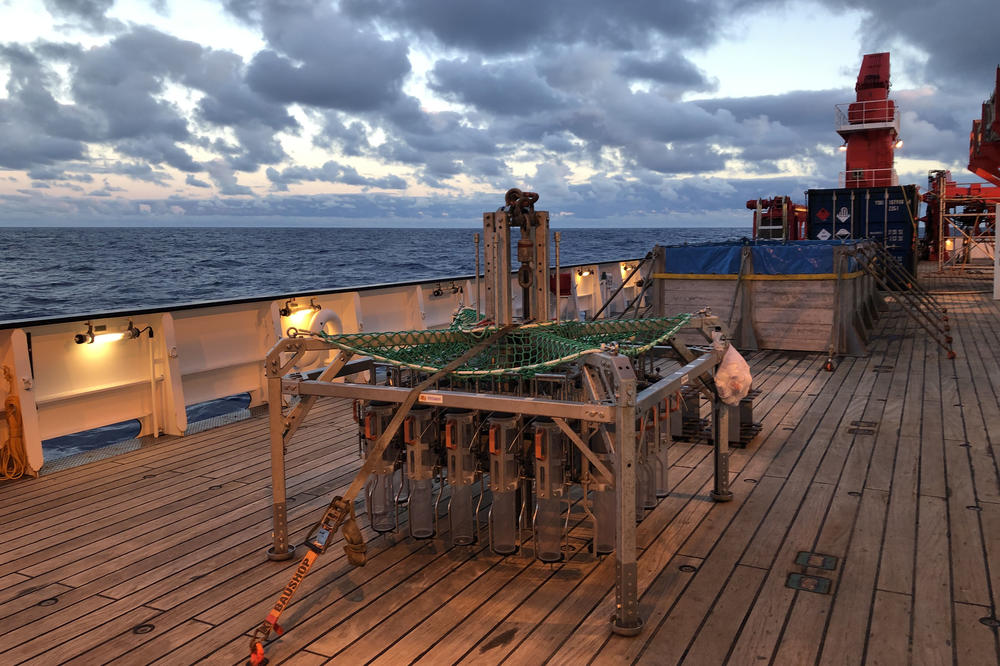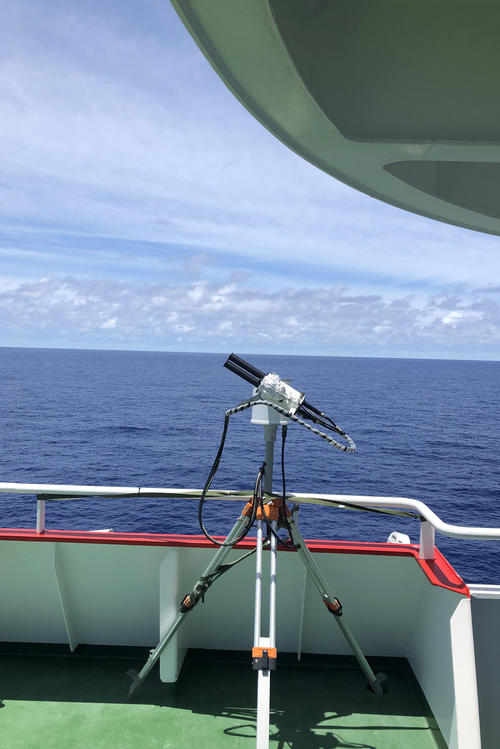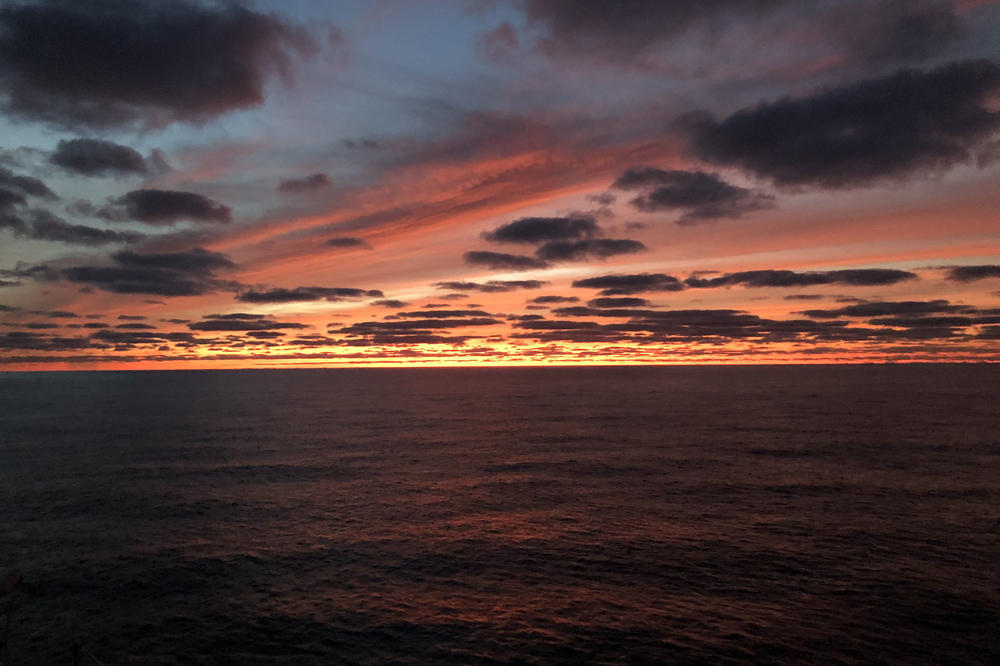At Sea on the “Sun”
Thomas Ruhtz, a researcher at Freie Universität Berlin’s Institute for Space Sciences, reporting from aboard a research vessel in the Pacific Ocean, where teams are taking atmospheric measurements and measuring plastic waste.
Jun 21, 2019
The “Sonne” before setting sail on May 30. The research vessel is scheduled to reach Singapore on July 5.
Image Credit: Thomas Ruhtz
Few people travel literally around the world twice in one year. When in operation, the research vessel the “Sonne” (which means sun in German) covers a vast portion of the globe from the Indian Ocean to the Western Pacific. Anyone coming from Europe to conduct research on the ship ends up circling the globe – and if they took two research voyages, as was the case this year, that would mean circling it twice: once clockwise, once counterclockwise.
Thomas Ruhtz, a researcher at the Institute for Space Sciences at Freie Universität, shared his experiences aboard the “Sonne” with us.
Image Credit: Thomas Ruhtz
The ship usually spends about three days in port. During this time, there is a lot of commotion with shipping and receiving supplies and equipment. A great deal of planning goes into making sure that it all runs smoothly. Preparing everything for customs clearance in Germany, at the point of departure and point of arrival, and calculating the time needed for a shipment to arrive on time is a major logistical feat. Many of the people joining the research voyage have never dealt with these kinds of tasks before. Any number of things could go wrong if it were not for the help of experienced colleagues, staff, and professionals. Preparing for customs clearance and organizing deliveries by local shipping companies in Fiji are completely different processes than in Germany.
Usually on the second day in port, the ship’s crew and scientists get on board and disembark. Unlike other research vessels, the “Sonne” is spacious enough that everyone gets their own single cabin. A few double cabins are available for use when the ship is especially full. It can accommodate up to 33 crewmembers and 40 researchers. Each cabin is furnished with a desk, computer monitor, and Internet access for laptops – and even a private bathroom. There is also plenty of storage space for personal belongings. The conditions make work and travel aboard the “Sonne” very comfortable.
During the two trips, our team is responsible for taking measurements that help us characterize the atmosphere. In order to collect the data, several research institutions work together, including the Max Planck Institute for Meteorology (MPI-M), the MPI for Chemistry in Mainz, the Royal Netherlands Meteorological Institute (KNMI) in Utrecht, Heidelberg University, and the Institute for Space Sciences at Freie Universität Berlin.
The measurements allow us to check and confirm satellite products from over the Pacific. In other words, we compare information produced by data from satellites with data from the ground or in this case from the sea. We compare data on the degree of cloud cover, cloud height, trace gas concentrations, and aerosol pollution levels. This comparison is particularly important because there are very few such data available based on measurements taken at sea. Land measurements are much more common. If the comparison shows agreement between satellite measurements and our measurements from the ship, we can verify the validity of the satellite products. If there are discrepancies, then we know we need to work on our methods and procedures.
A second group of researchers is studying levels of plastic debris in the Pacific Ocean. The researchers are particularly interested in gathering data in the so-called “Garbage Patch,” located within the North Pacific Gyre. Several institutions are working together on the project, including the Center for Environmental Research in Leipzig, the Alfred Wegener Institute in Potsdam, the Senckenberg Research Institute in Wilhelmshaven, the Fraunhofer Institute for Ceramic Technologies and Systems in Dresden, the Leibniz Institute for Baltic Sea Research Warnemünde, and Stockholm University.
When we pass through the “patch,” there is no sign of the huge floating islands of plastic that are sometimes shown in the media. However, there has been a clear increase in the amount of plastic debris in the ocean in terms of flotsam density. The plastic particles range in size, but the overall quantity of plastic waste floating in the middle of the ocean is quite alarming. The team takes measurements of plastic levels by sifting the surface of the ocean. It also gathers data from the water column right down to the ocean floor and regularly collects samples from the flotsam.
Detailed laboratory analyses will be conducted on the various samples collected during the research voyage. The careful work in the laboratories back home is part of the MICRO-FATE project funded by the German Federal Ministry of Education and Research.
This article is an excerpt from the full-length German article published in campus.leben on June 21, 2019.
Further Information
Thomas Ruhtz, Freie Universität Berlin, Institute for Space Sciences, Tel.: +49 30 49 30 838 56 662, Email: ruhtz@zedat.fu-berlin.de

